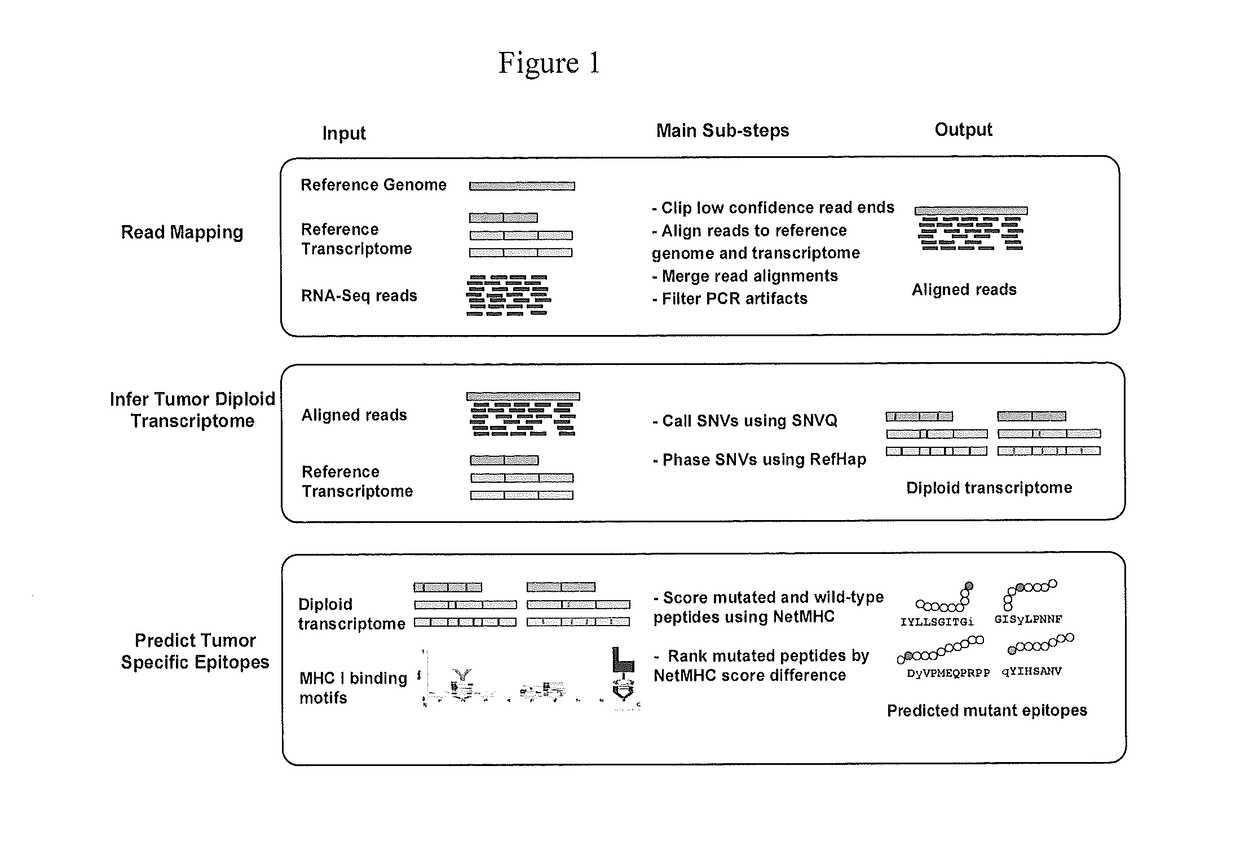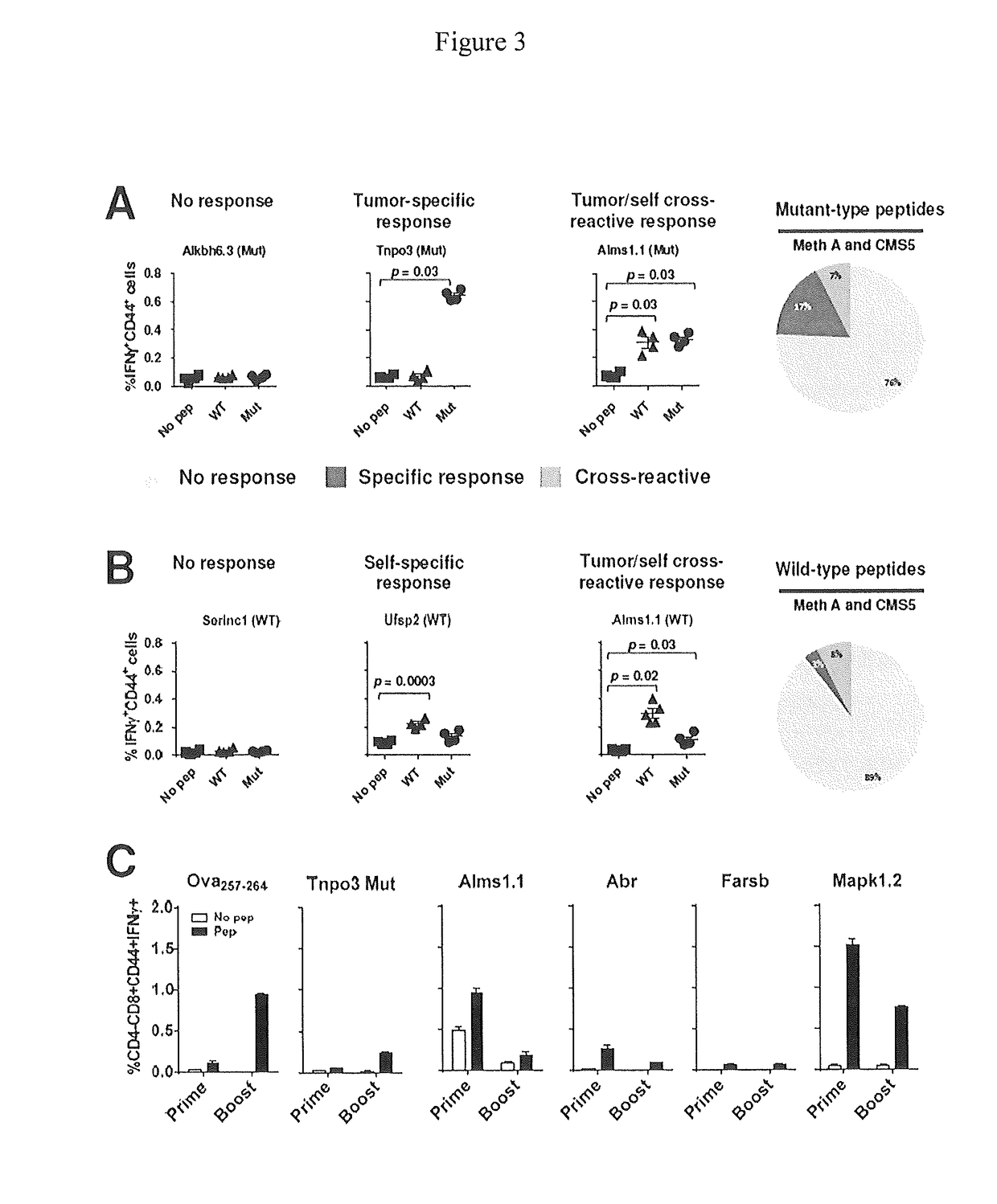Identification of immunologically protective neo-epitopes for the treatment of cancers
a tumor-specific epitope and immunologically protective technology, applied in the direction of antibody medical ingredients, instruments, drug compositions, etc., can solve the problems of limiting the use of cancer treatment, the treatment of the most common adult cancers, and remains far from satisfactory
- Summary
- Abstract
- Description
- Claims
- Application Information
AI Technical Summary
Problems solved by technology
Method used
Image
Examples
examples
[0106]Materials and Methods
[0107]Mice and tumors. The BALB / cJ mice (6-8 week old females) were purchased from the Jackson Laboratory (Bar Harbor, Me.). Mice were maintained in the virus-free mouse facilities at the University of Connecticut Health Center.
[0108]Sample Preparation. Samples were prepared using the Illumina® protocol outlined in “Preparing Samples for Sequencing of mRNA” (Part#1004898 Rev. A September 2008). The protocol consists of two parts: cDNA synthesis and paired-end library preparation. First, mRNA was purified from total RNA using magnetic oligo(dT) beads, then fragmented using divalent cations under elevated temperature. cDNA was synthesized from the fragmented mRNA using Superscript™ II (Invitrogen), followed by 2nd strand synthesis. cDNA fragment ends were repaired and phosphorylated using Klenow, T4 DNA Polymerase and T4 Polynucleotide Kinase. Next, an ‘A’ base was added to the 3′ end of the blunted fragments, followed by ligation of Illumina® Paired-End ada...
PUM
| Property | Measurement | Unit |
|---|---|---|
| conformational stability | aaaaa | aaaaa |
| pharmaceutical composition | aaaaa | aaaaa |
| length | aaaaa | aaaaa |
Abstract
Description
Claims
Application Information
 Login to view more
Login to view more - R&D Engineer
- R&D Manager
- IP Professional
- Industry Leading Data Capabilities
- Powerful AI technology
- Patent DNA Extraction
Browse by: Latest US Patents, China's latest patents, Technical Efficacy Thesaurus, Application Domain, Technology Topic.
© 2024 PatSnap. All rights reserved.Legal|Privacy policy|Modern Slavery Act Transparency Statement|Sitemap



